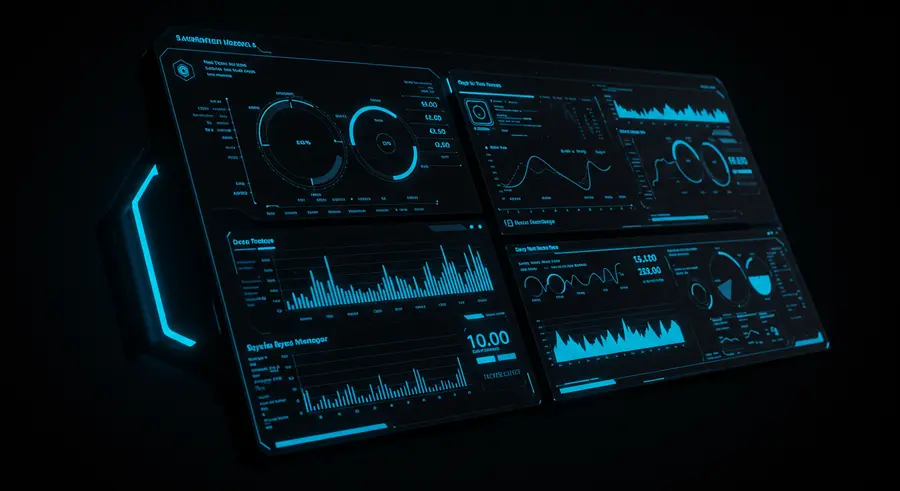Appearance

Welcome, fellow tech enthusiasts and reliability champions! 👋 In today's dynamic digital landscape, merely building software isn't enough; we must ensure it's bulletproof, scalable, and performs flawlessly under all conditions. This is where the power of Site Reliability Engineering (SRE) truly shines, and when supercharged with AI-driven observability, it transforms into an unstoppable force for operational excellence.
For a foundational understanding of SRE, I highly recommend exploring our catalogue page on Key SRE Principles and Practices. Building on those principles, this article dives deep into advanced SRE strategies, emphasizing how artificial intelligence is revolutionizing the way we monitor, manage, and maintain our systems.
What is Advanced SRE and Why Does it Matter Now More Than Ever? 💡
Advanced SRE moves beyond the basics of setting up monitoring and incident response. It's about proactively engineering systems for resilience, anticipating failures, and leveraging data to make intelligent decisions. In complex, distributed environments (think microservices, cloud-native architectures, and serverless functions), traditional monitoring falls short. This is where AI steps in.
The Pillars of Advanced SRE 🏗️
Holistic Observability (Powered by AI): While the three pillars of observability (metrics, logs, and traces) are fundamental, advanced SRE integrates AI to derive deeper insights.
- Anomaly Detection: AI algorithms can identify unusual patterns in metrics and logs that human eyes might miss, flagging potential issues before they escalate into outages. Imagine an AI detecting a subtle memory leak trend days before it causes a service crash!
- Root Cause Analysis (RCA) Automation: Instead of manually sifting through thousands of log lines and dashboards, AI can correlate disparate data points from various services to pinpoint the likely root cause of an incident, drastically reducing Mean Time To Resolution (MTTR).
- Predictive Analytics: By analyzing historical data, AI can predict future system behavior, helping SREs anticipate capacity needs, potential bottlenecks, or even predict when a hardware component might fail. This allows for proactive scaling and maintenance.
Intelligent Automation & Toil Reduction: Automation is an SRE mantra, but advanced SRE uses AI to automate smarter.
- Self-Healing Systems: AI can power automated runbooks that not only detect but also remediate common issues without human intervention. For instance, if an AI detects a failing container, it can automatically trigger a restart or scaling event.
- Intelligent Alerting: AI reduces alert fatigue by identifying truly critical alerts from noise, enriching alerts with context, and even routing them to the most appropriate on-call engineer based on past incident patterns.
Proactive Incident Management & Chaos Engineering: Advanced SRE embraces chaos and prepares for the worst.
- Automated Game Days & Chaos Experiments: AI can help design and execute sophisticated chaos experiments, intelligently injecting failures into systems to test their resilience in a controlled manner. It can also analyze the impact of these experiments, providing valuable insights.
- Blameless Post-Mortems with Data: While blameless post-mortems are a cultural practice, AI can provide comprehensive data-driven insights, making it easier to understand "what happened" and "why," facilitating better learning and preventing recurrence.
Optimized Service Level Objectives (SLOs) & Error Budgets: SLOs are the heart of SRE, defining reliability targets. Advanced SRE refines their application.
- Dynamic SLOs: AI can help refine SLOs by identifying what truly matters to users and business outcomes, and even suggest dynamic adjustments based on real-time traffic patterns or external factors.
- Automated Error Budget Management: AI can provide real-time visibility into error budget consumption, allowing teams to make informed decisions about feature development versus reliability work, ensuring they stay within their allocated budget without compromising user experience.
Real-World Impact and Examples 🌐
- E-commerce Platforms: Imagine an AI-powered system detecting a subtle slowdown in checkout page load times, correlating it with a spike in database query latency on a specific microservice, and automatically scaling up that service before customers experience significant delays.
- Fintech Services: For a banking application, AI-driven observability can spot unusual transaction patterns indicative of fraud, while advanced SRE practices ensure the core transaction processing system is resilient to sudden traffic surges during market events.
- Gaming Industry: During peak gaming events, AI can predict load patterns and automatically provision resources, while chaos engineering ensures that even if a critical game server goes down, the experience for players is minimally interrupted.
The Future is Reliable and Intelligent 🤖✨
The convergence of advanced SRE practices with AI-driven observability isn't just a trend; it's the evolution of how we build, deploy, and operate software in an increasingly complex world. By embracing these synergies, we move closer to truly self-healing, self-optimizing systems that deliver unparalleled reliability and user satisfaction.
Are you ready to unlock the peak performance of your systems? Start by integrating AI into your observability stack and relentlessly applying advanced SRE principles!
#SRE #SiteReliabilityEngineering #Observability #AI #DevOps #CloudNative #Automation #Reliability #TechBlog